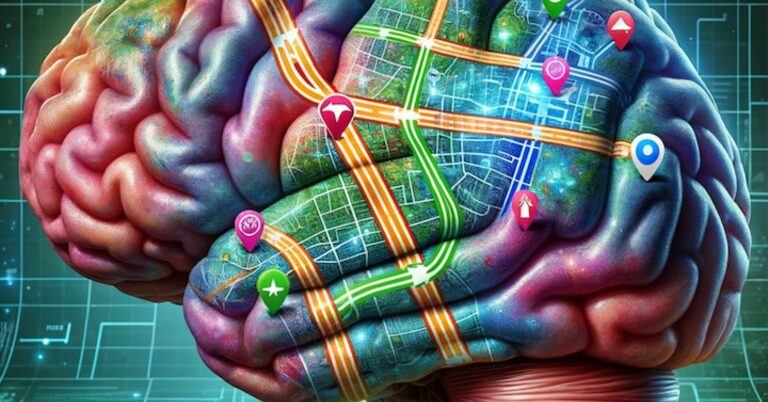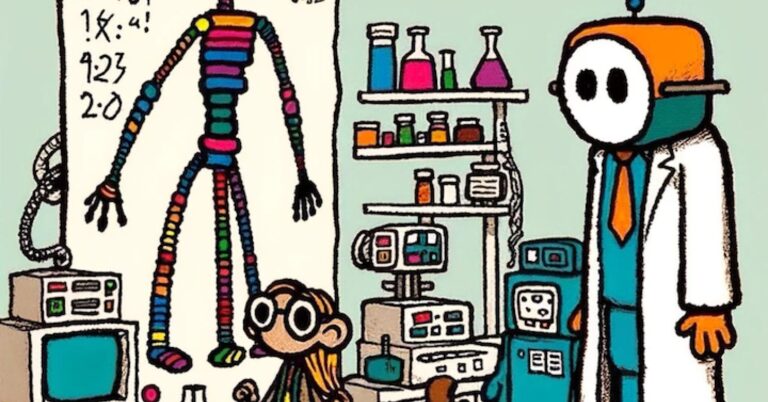
Source: Art: DALL-E/OpenAI
Exponential innovation. It’s the term that defines the very nature of transformation in today’s techno-centric world. And at the very heart of this technological trajectory, artificial intelligence stands as a monumental force, reshaping the landscape of what’s possible.
And perhaps most importantly, artificial intelligence isn’t just a part of the story—it’s leading the charge. We’re witnessing the dynamic of “stacked AI innovation,” a concept that’s as intriguing as it is transformative. AI is no longer a tool of processing and number crunching that just speeds up the process; AI is also enriching this process with layers of knowledge and insight, one atop the other. This is the landscape we find ourselves in today—a place where AI is not just a tool but the architect of a new era of cognitive prowess and innovation. Simply put, it’s AI to the power of AI.
While Moore’s Law has been a guiding star in technological advancement, AI’s trajectory is setting a new benchmark. This growth isn’t just about faster processors; it’s about smarter, more adaptable systems that learn from each iteration, moving us from a world of predictable progression to one of dynamic innovation.
The Evolving Mastery of Stacked AI Innovation
The essence of stacked AI innovation lies in its evolving mastery—a dynamic, self-enhancing progression that transcends traditional learning paradigms. Picture AI as a virtuoso musician who not only perfects one instrument but also learns to orchestrate an entire symphony. With each new piece it plays, it doesn’t just add to its repertoire; it deepens its understanding of music theory, composition, and performance. This is AI in the world of stacked innovation: learning, adapting, and mastering increasingly complex tasks with each iteration.
In practical terms, the impact of this stacked AI innovation holds the promise to be a powerful driver across many industries. For instance, in the field of finance, AI systems that begin with basic market analysis can advance to predict complex economic trends, aiding in more strategic investment decisions. In transportation, AI that initially focuses on optimizing routes can evolve to enhance the entire traffic management system, leading to more efficient and safer urban mobility. Each step in AI’s learning process not only builds on its previous capabilities but also expands its scope, leading to more nuanced and effective solutions across diverse sectors.
This process isn’t just about accumulating data or running algorithms more efficiently; it’s about AI systems developing an almost intuitive grasp of the tasks they perform. They’re not just solving problems; they’re learning to identify which problems need solving and figuring out the most effective ways to solve them. This self-evolving capability of AI is a leap from traditional machine learning, ushering in a new era of problem-solving tools that are not only intelligent but also increasingly insightful and autonomous.
The true power of stacked AI innovation is its exponential impact. Each layer of learning and adaptation doesn’t just add to the AI’s capability; it multiplies it, enabling the system to make leaps in understanding and application. This represents a fundamental shift in how we approach challenges and opportunities across various sectors, paving the way for AI to become a central driver in our quest for advancement and innovation.
Navigating Adaptation and Collaboration
As artificial intelligence increasingly shapes our future, the key to unlocking its full potential lies in our ability to collaborate and adapt. The journey ahead with AI is not a solitary one; it’s a path best navigated through collective effort. Bringing together diverse minds from academia, industry, and government, we can create a supportive ecosystem for AI. This collaborative approach ensures that AI develops in a way that’s beneficial and ethical, addressing societal needs while fostering sustainable progress.
Adapting to an AI-enhanced world goes beyond technical know-how. It requires a cognitive shift, an openness to continual learning and change. As AI transforms various aspects of our lives, from how we work to how we solve complex global issues, staying informed and flexible is crucial. Embracing AI means recognizing it as more than just a technological advancement; it’s a transformative force that, when harnessed responsibly, can align with and amplify our collective aspirations and values. In embracing this journey, we’re not just advancing technology; we’re shaping a future that reflects our shared vision of progress and innovation.




















+ There are no comments
Add yours